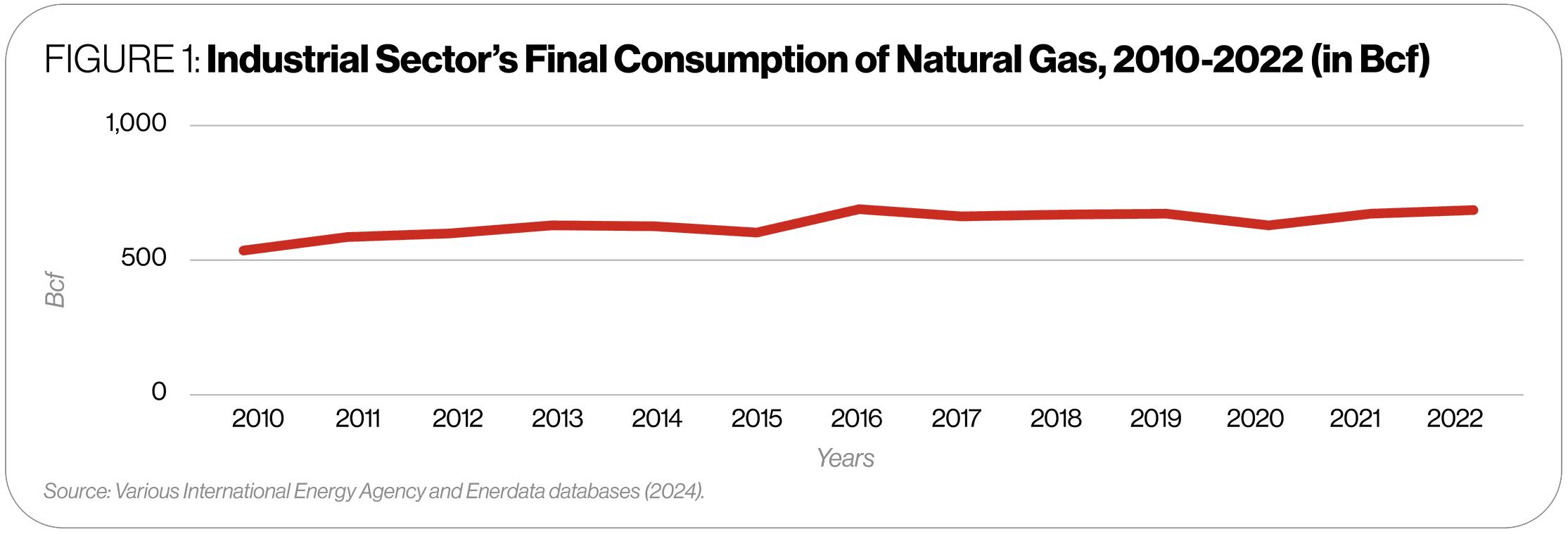Click here to download this edition of Energy Perspectives as a PDF.
Industries are critical to Canada’s economic development. As the Canadian economy and population grow, so will demand for materials and goods. Their production is reliant on the industrial sector, which includes all manufacturing, mining, forestry, and construction activities.
Canada has abundant natural resources. Canadian industries are also leading producers and exporters of products such as chemicals, forestry and pulp, automobiles, aluminum, gold, and steel. All these industries are energy intensive. In fact, the industrial sector accounts for 43 percent of overall energy use in Canada.
To meet their energy needs, many Canadian industries use natural gas, a vital component both as an energy source and a raw material. The sector’s final natural gas consumption rose from 43.7 billion cubic feet (Bcf) to 684.6 Bcf between 2010 and 2022, a 26 percent increase (see Figure 1).

The industrial sector can be divided into two groups. Heavy industries, such as chemical production and steel making are energy intensive. Light industries, which include a broad range of manufacturing such as food, textile, consumer goods, and machine and transport equipment, are less energy intensive.
In heavy industries such as steel manufacturing, natural gas consumption increased from 64 Bcf to 66.8 Bcf from 2010 to 2021 (the latest year for which data is available). The chemical industry’s natural gas consumption declined to 140 Bcf in 2021, whereas the non-metallic industry, which produces products such as cement, ceramic, and glass, saw its natural gas consumption nearly double between 2010 and 2021 from 19 Bcf to 30 Bcf. Non-ferrous metal industries producing metals such as aluminum, zinc, and copper saw their natural gas use increase from 26 Bcf in 2010 to 37 Bcf in 2021 (see Figure 2).

Although less energy intensive than heavy industries, light industries overall saw natural gas use increase from 2010 to 2021. The food and beverage industry increased its use of natural gas from 40 Bcf to 73 Bcf. The machinery and textile industries saw a decline in natural gas use during this period (from 12 Bcf to 10 Bcf, and from 4 Bcf to 2 Bcf, respectively), but the wood industry’s use of natural gas increased from 8 Bcf to 19 Bcf.
Natural gas is the largest single energy source for the manufacturing sector, accounting for about 28 percent of the energy the sector consumes (see Figure 3).

Natural gas is vital for Canadian industries as both an energy source and a raw material. Its abundance in Canada gives industries in this country an advantage over other manufacturers elsewhere in the world.
Canadian Energy Centre Energy Perspectives are short contextual explanations of energy-related data released periodically to provide context on energy issues for investors, policymakers, and the public. The source of profiled data depends on the specific issue.
